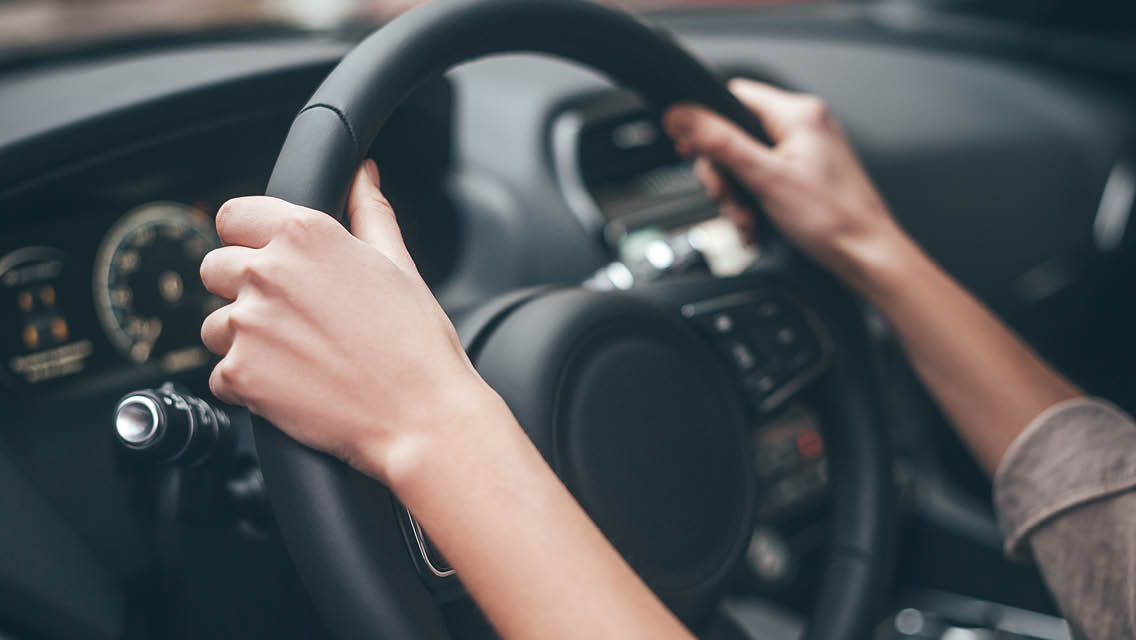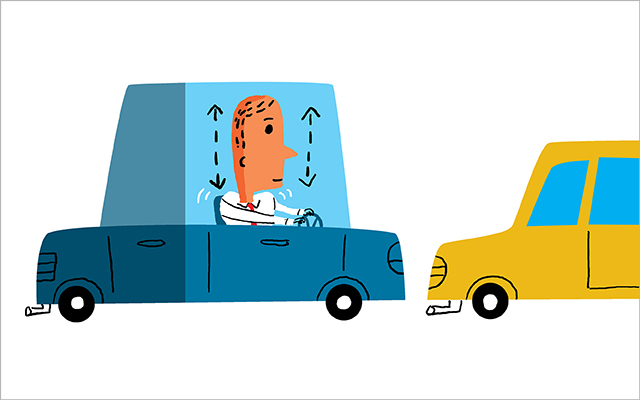Let’s admit it: Driving is stressful for many of us, and it seems to be getting more so. When we pull out onto the road, we may run into a host of things that can get on our nerves — bad road conditions, lanes narrowed or obliterated by construction, aggressive or inept drivers, detours, traffic jams, and more.
To make matters worse, every day seems to bring new stories of road rage: drivers taking out their frustrations by tailgating, shouting, making rude gestures, and, in the scariest cases, physically attacking other drivers, with or without weapons. And some of us are freaked out by freeways, with their merging challenges and high speeds. No wonder the prospect of getting on the road can get our hearts pounding.
So, how to chill out in our vehicles? Psychologist Robert Nemerovski, PsyD, who specializes in anxiety and anger issues and blogs about road rage and driving anxiety, has some suggestions to make our trips feel a whole lot better.
Stress Sources
You expect that your trip will go perfectly. According to Nemerovski, a significant source of stress kicks in even before we get behind the wheel. “As with many things in life,” he says, “there’s an expectation, or a plan, that things are going to work out the way we want, or that they should.” These expectations can set us up to be extra anxious or angry when they aren’t met.
“After all, we are out there on the road with many other people with similar expectations, and things don’t always go the way we want, whether that’s because of weather or traffic or other people’s driving behavior.”
You’re not sure how to react when you encounter bad drivers. Encountering reckless or inattentive driving is a major source of stress, Nemerovski says. “A ton of research indicates that observing another person being oblivious and driving poorly makes us feel both vulnerable and threatened — as well as angry.”
You worry about becoming a target of road rage. “It’s also in the scientific literature that there is a priming factor in road rage,” he notes. “People are hearing about it in the news, and they’re concerned that someone out there will be aggressive toward them. So they wind up feeling anticipatory energy about that, whether it’s stress, anxiety, or even some defensive aggression.”
Driving seems to have become more difficult. You may be concerned that your reaction time has slowed, which leads to fears that you won’t be able to respond quickly to a hazardous situation. Or perhaps a pinched nerve or other injury makes it hard to turn your head and check your blind spots.
You spot an accident on the road. A crashed car, a semi on its side, a vehicle that has spun out into the ditch, or an animal that has been hit and killed is unsettling to witness. “It’s an example of somebody or something in trouble, and it can jolt us, waking us up to our own vulnerability,” says Nemerovski.
Strategies for Success
1) Adjust your expectations. It’s likely that you will meet some big or small driving challenge on your trip, Nemerovski points out. This is part of driving — and life — and it’s probably not as big of a deal as it feels in the moment. Of course, serious accidents and other major troubles are always a possibility, but driving with a reasonably peaceful attitude can help reduce the likelihood that they’ll occur.
2) Be aware of your early warning signs of stress and anxiety. Driving may aggravate our stress, but it may not be the ultimate source of it. “We’re all living in a stew of sources of anxiety and stress, whether it’s because of challenges we face in life or information that we pick up from the news and the internet,” Nemerovski says. “So it’s important for us to understand where our baseline level of stress and anxiety is.”
He advises us to become conscious of how and where these feelings show up, before and after we get in the car. Note where in your body you tend to feel stress: Does your chest tighten? Does your breathing become shallower, or more rapid or irregular? Do you feel your temperature change? Do you clench your jaw or make a fist?
3) Pause and breathe before you drive. “I think it’s a good idea, before we turn on the vehicle, to just give ourselves a minute to check in with ourselves,” he suggests. Check yourself for signs of anxiety and stress. If you find that you’re wound up, do a little deep breathing — perhaps this classic exercise: Inhale for five seconds, hold for four seconds, then exhale for seven seconds. Repeat a few times. You can deep-breathe like this while you’re on the road too.
4) Create a calm environment in your vehicle. “What are you listening to as you drive?” asks Nemerovski. “Is it some peaceful music that puts you in the right mood, or is it a podcast or talk-radio show that’s winding you up about politics or the latest pandemic or climate disaster?” A clean and tidy interior can help you stay calm as well.
5) Think and plan ahead. A little forethought can make your trip a lot calmer. If you’re worried about your reaction time or visibility, for example, you can plan a slower but less stressful route, then leave early to give yourself time to take it — and to allow for possible detours or traffic slowdowns.
6) Navigate intentionally. GPS apps can be helpful, but keeping an eye on their instructions diverts your eyes from the road, and the directions can be hard to follow. If you’re using a navigation app, familiarize yourself with the directions before departing. Consider plotting your route on a physical map to get a good sense of where you’re going.
7) Stay out of the left lane. If you are freeway-averse but have to take one, Nemerovski says, there’s no reason to use the left lane unless you need to pass. “In the middle or right lane there’s less happening that we have to adapt to, and we have more time and opportunity to monitor our feelings and reactions,” he says.
8) Think of others. Drivers on the road form a community, explains Nemerovski. “Everybody is trying to accomplish one thing: get from point A to point B in one piece and in a time-efficient manner,” he says. “By realizing that everybody is in the same boat, we will be less prone to frustration, stress, and anger.”
9) Put the best possible interpretation on driving you don’t like. As part of driving within a community, you can give seemingly bad or aggressive drivers the benefit of the doubt. That speedster may be rushing to an important doctor’s appointment. That nervous lane changer may be a brand-new driver. This generous act of personalization can make you less likely to have a strong negative reaction to poor driving choices, which reduces the risk of catalyzing or aggravating an incident of road rage.
10) Practice the FIDO principle. In Nemerovski’s lexicon, FIDO stands for “forget it and drive on.” He says this is the best way to react to stressful driving moments that have passed: a speed demon who cut you off, a troublesome detour, a driver who seemed incompetent and dangerous. Ruminating about what you’ve experienced could take your attention off the road.
Renewal
For more inspiration and strategies to overcome life’s challenges, please visit our Renewal department.
This article originally appeared as “Curb Your Driving Anxiety” in the July/August 2023 issue of Experience Life.





This Post Has 0 Comments